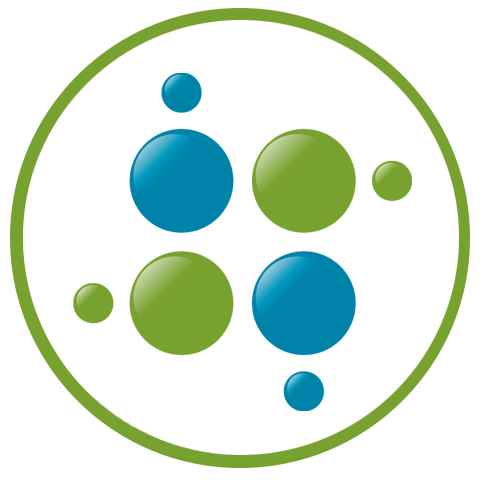Ending the Wait: Breaking Down Patient Access Barriers
Specialty medications provide hope for hundreds of thousands of patients in the United States, but this hope often comes at a high cost, in terms of...
Shift the focus to improving patient experience, care, and practice success
Empower your practice to focus on patient care with streamlined administrative solutions
Get in touch with our team for provider client support
Ensure patients can start and stay on the therapies they need by removing obstacles at every step of their journey
Solution
Resources
Our focus has been deeply rooted in one common theme from the beginning — that patients are the priority
Keep up to date on news and announcements at CareMetx
Join our team
Meet with us
4 min read
 CareMetx
:
Nov 3, 2021 2:54:33 PM
CareMetx
:
Nov 3, 2021 2:54:33 PM

Specialty care is traditionally high-touch. With patients, caregivers, nurses, case managers, field reimbursement managers, and more, there are a lot of stakeholders involved to help ensure patients get the medication they need.
At the same time, patient access and support are becoming increasingly complex. Rising prices create affordability issues for patients, with nearly 20% of US adults abandoning a prescription in the past year because of cost. High costs also result in additional scrutiny from payers, who then add more access barriers like prior authorization requirements and step therapy. Complex treatment regimens involving multiple medications and devices further complicate patient access.
You might think this would create a need for even more boots on the ground. But by using a high-tech approach, you can convert manual, disconnected processes reliant on old technology into an automated, streamlined hub. This allows you to direct the human touch to the patients who need it most.
The result? Greater access to your specialty therapy and better outcomes for patients – all at a lower cost. Here are the top features of technology-enabled hubs.
Discover how a technology-enabled hub helps end the wait for patients.
Administrative transactions like benefits verification, prior authorization, and claim inquiry cost the healthcare industry more than $40 billion annually. Automating these transactions can help cut down on paperwork, improve communication, accelerate time-to-fulfillment, and create efficiencies. Real-time automated transactions include:
Many patient support hubs offer these services, but not all eServices are created equal. Look for a hub that leverages proprietary data and logic in real time and has rules to off-ramp transactions that fail to auto-adjudicate so that support can be provided. In addition, API gateways that unify and streamline third-party apps can help drive connectivity and speed-to-therapy.
Quality data means you can not only track the success of your program, but also create better market access strategies and help get more patients on therapy, faster, improving outcomes and improving lives. Data can also help you create a better experience for existing patients and demonstrate the value of your therapy to payers to support favorable reimbursement.
The latest technology-enabled hubs use an enterprise-grade data lake rather than a traditional data warehouse, which allows for greater data interchange. And they leverage enterprise business intelligence tools and real-time API-based data interchanges to drive detailed patient journeys and program performance analytics.
What about reporting on all that data? No one wants to waste hours finding the information they need or piecing together analytics. Robust dashboards will provide both aggregated data and the ability to slice, dice, and create a more detailed view. You should also be able to easily understand program performance, patient journeys, and calibration of automation, to ensure you’re getting the most from your hub.
The hassle of administrative transactions like PA can prevent providers from prescribing medications that require them. Embedded workflows help standardize core patient access service requests, reducing hassle and increasing convenience – so providers won’t hesitate to prescribe your therapy.
With embedded workflows, providers don’t have to leave their own portal to separately engage with the patient support hub after issuing a prescription. These workflows embed with EMRs so that providers can issue prescriptions from their preferred technology. The system helps eliminate the need for manual processes by automatically initiating the process.
Hubs can also link partners in other ways, for example unifying processes across third-party apps and facilitating information sharing. The most tech-forward hubs have powerful API connectivity and configurable modular technology that embeds directly into partner workflows. But they won’t forget about user experience: intuitive navigation, single-sign on, and log-in support help ensure providers use the workflows to the fullest.
Technology-enabled hubs leave staff more time to focus on the specific patient access challenges that require the most support. Thus, while technology can help to eliminate paper-based enrollment functions and manual data entry, the human touch remains a vital element in patient support. One common high-touch area is reimbursement.
Additional patient access barriers like prior authorization requirements and step therapy can mean an increased need for high-touch field reimbursement teams to resolve complaints and provide education. Hubs with field portals can deliver brand-specific benefit and usage intelligence around key metrics, empowering field sales with actionable reimbursement insights and timely data.
Technology is transforming the entire healthcare industry, but there is still a need for the human touch. When you strategically leverage both existing and emerging technology and integrate it with personalized support services, you’ll end the wait for patients and end high costs for your program.
End the wait. End high costs. Take a quick assessment to unlock the latest solutions.

Specialty medications provide hope for hundreds of thousands of patients in the United States, but this hope often comes at a high cost, in terms of...

In the fast-paced world of specialty drug access, you need both people and technology to give patients the ideal level of support. Too often,...

While the entire healthcare industry experienced a rapid evolution due to the COVID-19 pandemic, specialty pharmacy was particularly impacted in...